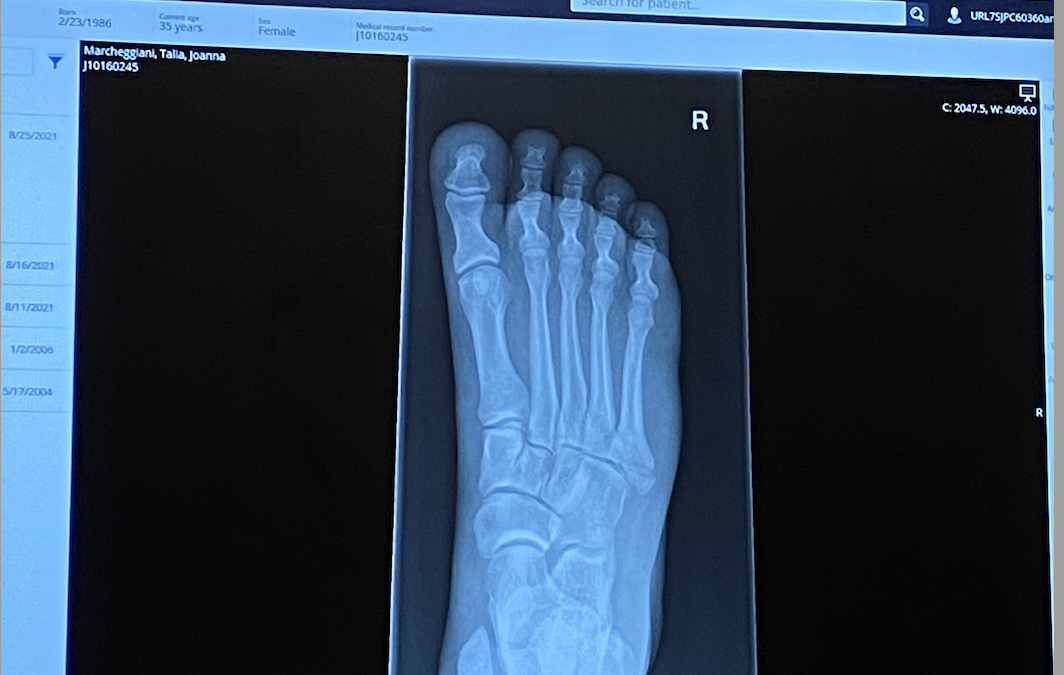
by Dr. Talia Marcheggiani, ND | Sep 11, 2021 | Anxiety, Art, Depression, Emotional Wellness, Emotions, Exercise, Fitness, Happiness, Health, Inflammation, Letting Go, Medicine, Meditation, Mental Health, Mind Body Medicine, Mindfulness, Naturopathic Philosophy, Psychology, Self-care
About a month ago I fractured my right 5th metatarsal (an avulsion fracture, aka “The Dancer’s Fracture” or a “Pseudo-Jones Fracture”).
As soon as I laid eyes on the x-ray and the ER doctor declared, “Ms. Marcheggiani,” (actually, it’s doctor, but ok) “you broke your foot!” things changed.
I have never broken anything before, but if you have you know what it’s like. In a matter of seconds I couldn’t drive. I could barely put weight on it. I was given an Aircast boot to hobble around in, and told to ice and use anti-inflammatories sparingly. My activities: surfing, skateboarding, yoga, even my daily walks, came to a startling halt.
I spent the first few days on the couch, my foot alternating between being elevated in the boot and immersed in an ice bath. I took a tincture with herbs like Solomon’s Seal, mullein, comfrey, and boneset to help heal the bone faster. I was adding about 6 tbs of collagen to oats in the morning. I was taking a bone supplement with microcrystalline hydroxyapatite, pellets of homeopathic symphytum, zinc, and vitamin D.
We call this “treatment stacking”: throwing everything but the kitchen sink at something to give the body as many resources as possible that it may use to heal.
My brother’s wedding came and went. I was the emcee, and the best man. I bedazzled my boot and hobbled around during set-up, photos, presentations, and even tried shaking and shimmying, one-legged on the dance floor. The next few days I sat on the couch with my leg up.
I watched the Olympics and skateboarding videos. I read The Master and the Margarita and Infinite Jest. I got back into painting and created some pen drawings, trying to keep my mind busy.
I slept long hours–an amount that I would have previously assumed to be incapable. The sleep felt necessary and healing. I was taking melatonin to deepen it further.
I closed down social media apps on my phone to deal with the immense FOMO and stop mindlessly scrolling. I journaled instead, turning my focus from the outside world to my inner one.
It was a painful process, and not necessarily physically.
I was confined to my immediate surroundings–not able to walk far or drive. I was at the mercy of friends and family to help me grocery shop. The last year and a half has made many of us grow accustomed to social isolation and a lot of my social routines from years prior had fallen by the wayside.
My world, like the worlds of many, had gotten smaller over the last 18 months. With a broken foot, my world shrunk even further.
The loneliness was excruciating.
It would come in waves.
One moment I would relish the time spent idle and unproductive. The next I would be left stranded by my dopamine receptors, aimless, sobbing, grieving something… anything… from my previous life. And perhaps not just the life I had enjoyed pre-broken foot, but maybe a life before society had “broken”, or even before my heart had.
I thought I would be more mentally productive and buckle down on work projects but it became painfully obvious that my mental health and general productivity are tightly linked to my activity levels. And so I spent a lot of the weeks letting my bone heal in a state of waiting energy.
My best friend left me a voicemail that said, “Yes… you’re in that waiting energy. But, you know, something will come out of it. Don’t be hard on yourself. Try to enjoy things… watch George Carlin…”
During the moments where I feel completely useless and unproductive, waiting for life to begin, I was reminded of this quote by Cheryl Strayed. This quote speaks to me through the blurry, grey haze of boredom and the existential urgency of wasting time.
It says,
“The useless days will add up to something. The shitty waitressing jobs. The hours writing in your journal. The long meandering walks. The hours reading poetry and story collections and novels and dead people’s diaries and wondering about sex and God and whether you should shave under your arms or not. These things are your becoming.”
These things are your becoming.
Something will come out of it.
When I did a 10-Day Vipassana (silent meditation) retreat in the summer of 2018, I learned about pain.
It was Day 3 or 4 and we had been instructed to sit for an entire hour without moving. The pain was excruciating. The resistance was intense. I was at war with myself and then, when the gong went off and there was nothing to push against, I noticed a complete relief of tension. I was fine.
The next time I sat to meditate (another hour after a 10 minute break), I observed the resistance and released it. It’s hard to describe exactly what I did. It was something like, letting the sensations of pain flow through me like leaves on a river, rather than trying to cup my hands around them, or understand or making meaning out of them.
The sensations ebbed and flowed. Some might have been called “unpleasant” but I wasn’t in a space to judge them while I was just a casual observer, watching them flow by. They just were.
And when I have intense feelings of loneliness, boredom or heart-break I try to remember the experience I had with pain and discomfort on my meditation cushion. I try to allow them.
“This too shall pass”.
When I have a craving to jump off my couch and surf, or an intense restlessness in the rest of my body, the parts that aren’t broken, I try to let those sensations move through me.
I notice how my foot feels. How while apparently still, beneath my external flesh my body is busy: it’s in a process. It’s becoming something different than it was before. It’s becoming more than a foot that is unbroken. It’s becoming callused and perhaps stronger.
Maybe my spirit is in such a process as well.
The antidote to boredom and loneliness very often is a process of letting them move through, of observing the sensations and stepped back, out of the river to watch them flow by. A patience. Letting go.
I can’t surf today. But, it is the nature of waves that there will always be more.
Pima Chodron in her book When Things Fall Apart also references physical pain and restless in meditation while speaking of loneliness.
She writes,
“Usually we regard loneliness as the enemy. Heartache is not something we choose to invite in. It’s restless and pregnant and hot with desire to escape and find something or someone to keep us company. When we can rest in the middle, we begin to have a nonthreatening relationship with loneliness, a relaxing and cooling loneliness that completely turns our usual fearful patterns upside down.”
She continues,
“When you wake up in the morning and out of nowhere comes the heartache of alienation and loneliness, could you use that as a golden opportunity? Rather than persecuting yourself or feeling that something terribly wrong is happening, right there in the moment of sadness and longing, could you relax and touch the limitless space of the human heart?
“The next time you get a chance, experiment with this.”
In other words, something will come of this.
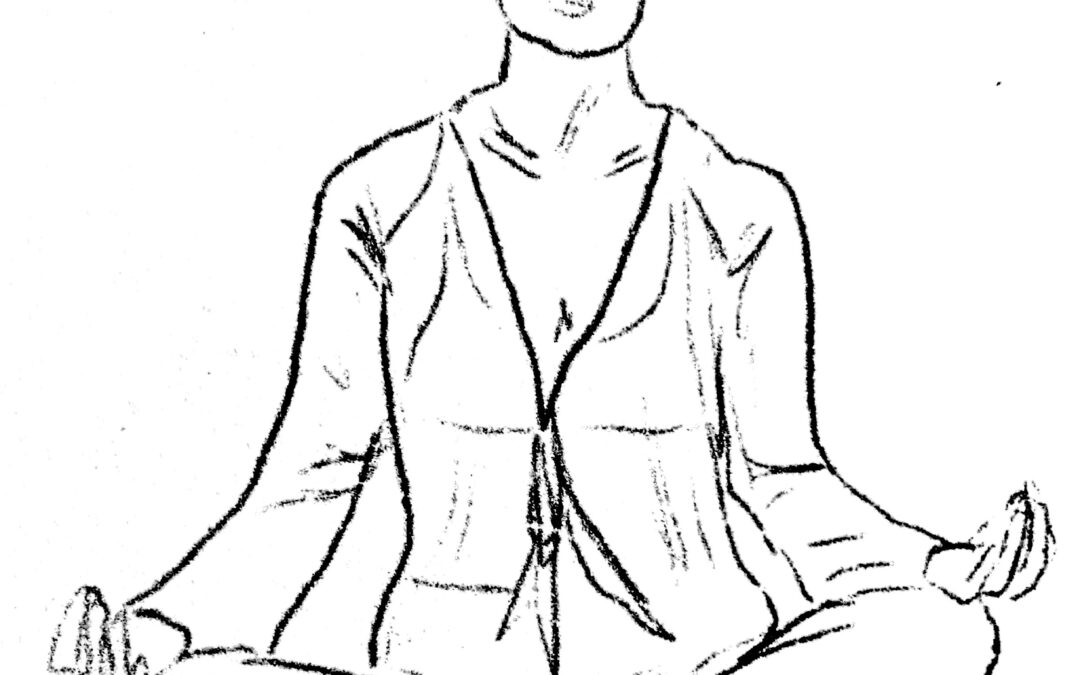
by Dr. Talia Marcheggiani, ND | Jul 9, 2016 | Acupuncture, Art, Art Therapy, Balance, Community, Depression, Emotions, Empathy, Health, Meditation, Mental Health, Mind Body Medicine, Mindfulness, Psychology, Self-care
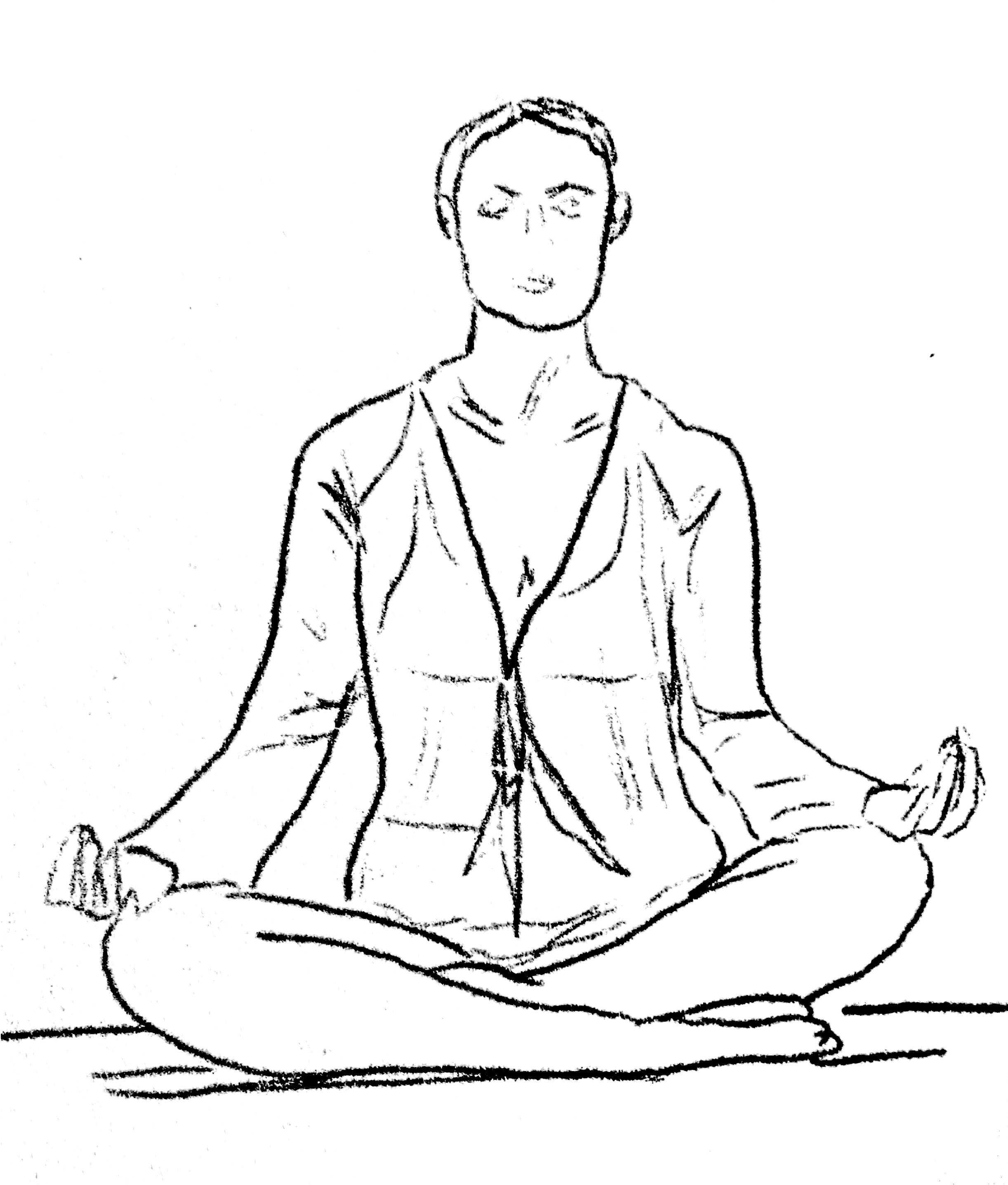 It seems like the world is falling apart. These days more than ever.
It seems like the world is falling apart. These days more than ever.
Race wars, weapons, war, wealth concentrated into the hands of a few, and violence, Facebook is filled with videos that fill our heads and hearts with a complicated mixture of sadness, anger, anguish, confusion, frustration, enrage, injustice and a deep-felt sense of powerlessness. We struggle through these events to go on living—to go about our lives in a dignified fashion, to pay our rent, to engage our relationships, to find happiness and satisfaction in our lots in this world. It seems like the world is ending, and yet we still have our daily responsibilities. Our cynicism is engaged; our idealism is crumbling. Many of us feel hope leaving our bodies. Many of us feel frustration morphing into despair.
Stress is estimated to be the number one cause of disease. As a naturopathic doctor, my role often involves cleaning up the debris from chronic, long-term stress responses gone haywire. Oftentimes my patients don’t even perceive the stress they’re under. “I’m type A! I thrive under stress and pressure”, some will tell me. Other times the people I work with are so far in a state of overwhelm it’s all they can do to keep moving forward with their daily routines.
The World Health Organization estimates that 75-90% of doctor’s visits are attributed to by stress. I would estimate that 100% of the people I work with have on-going stress in their lives.
We doctors know that some people, the “Type B’s” in society, are more susceptible to stress. We know these people, we may even be one of them ourselves: the sensitive individuals, the intuitives, the feelers, the artists, empaths, activists and light-workers. We are individuals who are often drawn to artistic and healing professions, who care deeply about relationships, people, feelings and soft-ness in this world. We often find ourselves pushed up against hard edges, struggling to pay bills and cope with cruelty and injustice. We face daily struggles and the pain of living a disconnected, yet intricately interdependent life in modern-day society. Some natural doctors have terms us “parasympathetic dominants”—people whose nervous systems tend to get stuck in the parasympathetic (as opposed to stress-fuelled sympathetic) arm of the autonomic nervous system (the “automatic” nervous system).
We often feel overcome with a sense of overwhelm when faced with packed schedules, high stakes jobs that affect others, achievement-oriented striving and the prioritization of money and numbers over people. In this world of deadlines, assertion, aggression, fear, war and material wealth, we can often feel like we don’t fit in. We can suffer from burnout.
Burnout, “adrenal fatigue” or “parasympathetic dominance” happens when our stress response becomes depleted. It is characterized by naturopathic doctors as fatigue, excessive needs for sleep and quiet, lack of motivation, disrupted sleep schedules, difficulty losing weight, sluggish digestion, bloating and IBS, headaches and brain fog, poor memory, hormonal imbalance resulting in heavy or irregular periods, PMS, infertility and acne. Mental illness can begin to surface or worsen in this state, resulting in depression, anxiety, or even bipolar disorder and psychosis. The narrative of the mad, artistic genius, burdened by the weight and troubles of the world, surfaces to mind—the creative genius who is too sensitive for this world. We run the risk of becoming irritable, and losing some of our natural compassion as we drift off into exhausted survival mode.
Many of the people I work with are these sensitive individuals, myself included, and I’m proud to help this population. Through healing the sensitive feelers, we heal the world. The world needs a little more softness and more compassion. It needs people who can pick up on emotional nuances and care deeply about others. It needs people who listen, who feel, who create and share their versions of the human experience to teach others. Through the artists, we experience the depths of our own humanity. Through the artists, we see our pain and, through seeing our pain, we can begin to heal it. It is important that we can find fulfilling work and lives that nurture us, so that we may have the energy to extend our gifts to the world.
Healing parasympathetic dominance in my practice often manifests first as establishing a therapeutic relationship. We crave openness, time and space to explore emotional nuances and engage our natural sense of curiosity. We crave being deeply heard and felt. As a doctor, I do my best to listen, not just to the words, but the space between them, and the symptoms of the body. We look for root causes to issues so that we can establish lifestyle patterns that nurture us.
Creating a clean, nutritious diet: With lean protein, usually meats that stimulate metabolism and manage stress, healthy fats, anti-inflammatory nutrients and lots of fruits and vegetables, especially berries and leafy greens, we can begin to re-feed ourselves and heal inflammation.
Gentle, nurturing movement: I often suggest exercise that blends into the lifestyles of my patients, that works with them. Slow, meditative walking for an hour a day is a wonderful, scientifically proven method of bringing down stress hormone levels. It also creates space in the day for contemplation and integration.
Restful sleep: Through sleep hygiene and some strategically dosed supplements, improving sleep allows the body to repair itself and rest. Those suffering from burnout may need more sleep. Dealing with the guilt that can arise through sleeping in and saying no to non-essential activities to prioritize sleep is often a psychological hurdle in those who feel best when they are nurturing and giving to others, and not themselves.
Self-care: Journalling, meditation and engaging in creative pursuits are helpful armour in allowing one to integrate, express and stay open, energized and creative.
Nurturing mental health and emotions: Speaking to family and friends or a trained therapist or naturopathic doctor can allow us to dive more deeply into our own psyches. When we explore the corners of our mind we are able to heal mental-emotional obstacles to health and learn more about ourselves and others and alter the way we engage in the world. Opening ourselves up to deep-seated anger, fear and sadness is essential to clearing this repressed emotions and improving our experience in the world. My favourite forms of talk therapy are Narrative Therapy and Coherence Therapy. Both involve openly engaging the emotional and mental experience of the other to alter core beliefs and narratives and explore possibilities for living a preferred life experience.
Through the times we are facing, I urge us all to band together, embrace the healers and artists among us and engage in deep, nurturing self-care. Journal, spend time with friends and create. Take time from your activist pursuits and political readings to reflect, to meditate, to get some healing acupuncture and to cry or express anger. Feel the emotions that arise during this time. Take the time to listen to the narratives that emerge. Eat a diet filled with protein, try to keep to a sleep schedule, if possible. Nurture yourself and the complicated emotions that are arising within you and others.
We need you to help us through this time. It is people like you who can heal others, but only if you strive to heal yourself as well.
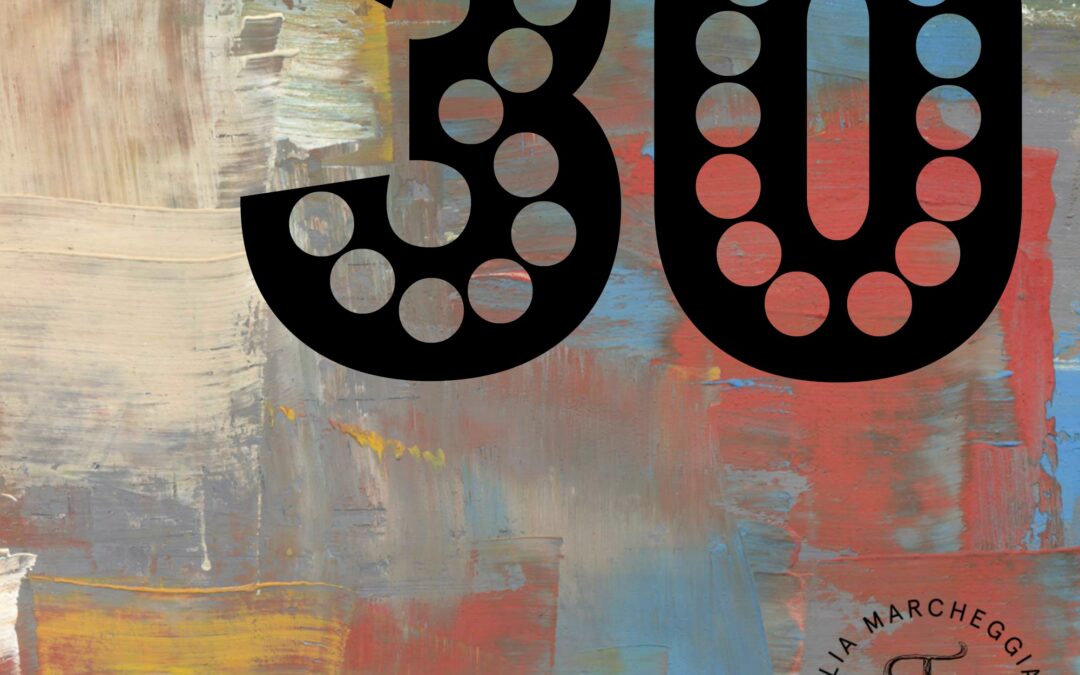
by Dr. Talia Marcheggiani, ND | Feb 23, 2016 | Art, Art Therapy, Balance, Culture, Digestion, Docere, Education, Emotions, Finding yourself, Happiness, Healing Stories, Health, Letting Go, Lifestyle, Listening, Love, Medicine, Meditation, Mental Health, Mind Body Medicine, Mindfulness, Naturopathic Philosophy, Naturopathic Principles, Patience, Philosophy, Psychology, Reflections, Self-care, Self-reflection
 Today, I’m 30, working on my career as a self-employed health professional and a small business owner and living on my own. I’ve moved through a lot of states, emotions and life experiences this year, which has been appropriate for closing the chapter on my 20’s and moving into a new decade of life. I’ve experienced huge changes in the past year and significant personal growth thanks to the work I’ve been blessed to do and the people who have impacted me throughout the last 30 years. Here are 30 things this past year has taught me.
Today, I’m 30, working on my career as a self-employed health professional and a small business owner and living on my own. I’ve moved through a lot of states, emotions and life experiences this year, which has been appropriate for closing the chapter on my 20’s and moving into a new decade of life. I’ve experienced huge changes in the past year and significant personal growth thanks to the work I’ve been blessed to do and the people who have impacted me throughout the last 30 years. Here are 30 things this past year has taught me.
- Take care of your gut and it will take care of you. It will also eliminate the need for painkillers, antidepressants, skincare products, creams, many cosmetic surgeries, shampoo and a myriad of supplements and products.
- Trying too hard might not be the recipe for success. In Taoism, the art of wu wei, or separating action from effort might be key in moving forward with your goals and enjoying life; You’re not falling behind in life. Additionally, Facebook, the scale and your wallet are horrible measures to gauge how you’re doing in life. Find other measures.
- If you have a chance to, start your own business. Building a business forces you to build independence, autonomy, self-confidence, healthy boundaries, a stronger ego, humility and character, presence, guts and strength, among other things. It asks you to define yourself, write your own life story, rewrite your own success story and create a thorough and authentic understanding of what “success” means to you. Creating your own career allows you to create your own schedule, philosophy for living and, essentially, your own life.
- There is such as thing as being ready. You can push people to do what you want, but if they’re not ready, it’s best to send them on their way, wherever their “way” may be. Respecting readiness and lack thereof in others has helped me overcome a lot of psychological hurdles and avoid taking rejection personally. It’s helped me accept the fact that we’re all on our own paths and recognize my limitations as a healer and friend.
- Letting go is one of the most important life skills for happiness. So is learning to say no.
- The law of F$%3 Yes or No is a great rule to follow, especially if you’re ambivalent about an impending choice. Not a F— Yes? Then, no. Saying no might make you feel guilty, but when the choice is between feeling guilty and feeling resentment, choose guilt every time. Feeling guilty is the first sign that you’re taking care of yourself.
- Patience is necessary. Be patient for your patients.
- Things may come and things may go, including various stressors and health challenges, but I will probably always need to take B-vitamins, magnesium and fish oil daily.
- Quick fixes work temporarily, but whatever was originally broken tends to break again. This goes for diets, exercise regimes, intense meditation practices, etc. Slow and steady may be less glamorous and dramatic, but it’s the only real way to change and the only way to heal.
- When in doubt, read. The best teachers and some of the best friends are books. Through books we can access the deepest insights humanity has ever seen.
- If the benefits don’t outweigh the sacrifice, you’ll never give up dairy, coffee, wine, sugar and bread for the long term. That’s probably perfectly ok. Let it go.
- Patients trust you and then they heal themselves. You learn to trust yourself, and then your patients heal. Developing self-trust is the best continuing education endeavour you can do as a doctor.
- Self-care is not selfish. In fact, it is the single most powerful tool you have for transforming the world.
- Why would anyone want to anything other than a healer or an artist?
- Getting rid of excess things can be far more healing than retail therapy. Tidying up can in fact be magical and life-changing.
- It is probably impossible to be truly healthy without some form of mindfulness or meditation in this day and age.
- As Virginia Woolf once wrote, every woman needs a Room of Own’s Own. Spending time alone, with yourself, in nature is when true happiness can manifest. Living alone is a wonderful skill most women should have—we tend to outlive the men in our lives, for one thing. And then we’re left with ourselves in the end anyways.
- The inner self is like a garden. We can plant the seeds and nurture the soil, but we can’t force the garden to grow any faster. Nurture your garden of self-love, knowledge, intuition, business success, and have faith that you’ll have a beautiful, full garden come spring.
- Be cheap when it comes to spending money on everything, except when it comes to food, travel and education. Splurge on those things, if you can.
- Your body is amazing. Every day it spends thousands of units of energy on keeping you alive, active and healthy. Treat it well and, please, only say the nicest things to it. It can hear you.
- If you’re in a job or life where you’re happy “making time go by quickly”, maybe you should think of making a change. There is only one February 23rd, 2016. Be grateful for time creeping by slowly. When you can, savour the seconds.
- Do no harm is a complicated doctrine to truly follow. It helps to start with yourself.
- Drink water. Tired? Sore? Poor digestion? Weight gain? Hungry? Feeling empty? Generally feeling off? Start with drinking water.
- Do what you love and you’ll never have to work a day in your life. As long as what you love requires no board exams, marketing, emailing, faxing, charting, and paying exorbitant fees. But, since most careers have at least some of those things, it’s still probably still preferable to be doing something you love.
- Not sure what to do? Pause, count to 7, breathe. As a good friend and colleague recently wrote to me, “I was doing some deep breathing yesterday and I felt so good.” Amen to that.
- As it turns out, joining a group of women to paint, eat chocolate and drink wine every Wednesday for two months can be an effective form of “marketing”. Who knew?
- “Everyone you meet is a teacher”, is a great way to look at online dating, friendships and patient experiences. Our relationships are the sharpest mirrors through which we can look at ourselves. Let’s use them and look closely.
- Being in a state of curiosity is one of the most healing states to be in. When we look with curiosity, we are unable to feel judgment, anxiety, or obsess about control. Curiosity is the gateway to empathy and connection.
- Aiming to be liked by everyone prevents us from feeling truly connected to the people around us. The more we show up as our flawed, messy, sometimes obnoxious selves, the fewer people might like us. However, the ones who stick around happen to love the hot, obnoxious mess they see. As your social circle tightens, it will also strengthen.
- If everyone is faking it until they make it, then is everyone who’s “made” it really faking it? These are the things I wonder while I lie awake at night.
Happy Birthday to me and happy February 23rd, 2016 to all of you!
by Dr. Talia Marcheggiani, ND | Jun 9, 2015 | Art, Balance, doctor as teacher, Evidence Based Medicine, Medicine, Mind Body Medicine, Naturopathic Philosophy, Naturopathic Principles, Patience, Patients, Philosophy
In most service industries, there are certain guarantees. If you go to a restaurant, your soup is guaranteed. At the GAP, you will get a pair of chinos, guaranteed. In lots of instances, you get what you are paying for and in most cases, you get to see if before you hand over your credit card—a coffee, a massage. In many cases, if you’re not satisfied, you can get your money back—guaranteed.
This is not the case in medicine. We cannot legally guarantee results. There are no guarantees.
Everybody and every body is different. Contrary to what it might seem like in our age of paralyzing fear of uncertainty, no one has all, or even most, of the answers.
Dr. Google makes it seem like we do, though.
When I see a new patient who is worried about their health and their future, I want to be able to promise them. I want nothing more than to say, “these breathing exercises will eliminate your anxiety, just like you asked for: poof! gone.”
I want to guarantee things.
I want to tell someone that, if they follow my instructions, they’ll never have another hypertensive emergency again. I want to, but I can’t. No one can. And our job is not to guarantee. It is to serve.
A $10,000 bag of chemotherapy pumped into your arm will not guarantee that the cancer goes into remission no matter how many studies show it has an effect. I can’t promise you’ll get pregnant, even though I’m doing my best, you’re doing your best and science is doing its best.
That’s all I can guarantee: that I will try my very best.
I can be your researcher, teasing out the useful scientific information from a sea of garbage and false promises—false guarantees from those who have no business guaranteeing anything. I can provide my knowledge, culminated from years of study and practice and life. I can sit with you while you cry and hear you share your story. I can let you go through your bag of supplements, bought in a whirlwind of desperation, and tell you what is actually happening in your body—something that doctor didn’t have time to explain. I have time to spend with you. We can have a real conversation about health. I can also make recommendations based on my clinical experience, research and millenia of healing practices. These recommendations will certainly help—virtually everyone sees some kind of benefit—but I can’t guarantee that either.
I watched a webinar on probiotics recently. The webinar sent me into a spiral of existential probiotic nothingness. I’ve been prescribing probiotics for years. I’ve seen benefits from them with my own eyes. Patients have reported great things after taking them and I feel better when I take them: my stomach gets flatter, things feel smoother, my mood gets lighter. Probiotics are wonderful. However, according to the research that was being presented by this professional, which he’d meticulously collected and organized, many things we thought about probiotics aren’t true. I’d have to change my whole approach when it came to probiotics, prescribing certain strains for certain conditions where they’d seen benefit. I remember feeling hard-done by by the supplement companies and the education I’d gotten at my school. How could we be so off base on this basic and common prescription?
At the same time, some skeptics were harassing me on Twitter, telling me that I’d wasted 4 years, that naturopathic medicine is useless and doesn’t help people. Besides having helped numerous people and having been healed myself, their words got to me. What if everything I know is as off-base as my previous knowledge on probiotics was?
The very next day, I called a patient to follow up with her. She’d kind of fallen off the radar for a while. She was happy to hear from me. I asked her how she was feeling, if she’d like to rebook. “I don’t need to rebook,” She told me, excitedly, “I’m completely better!”
After one appointment.
I was astounded and intrigued. Of course, we expect people to get better, but it takes time to heal, and I rarely go gung-ho on the first appointment, there was still lots left in my treatment plan for her. She’d been experiencing over seven years of digestive pain, debilitating fatigue, life-changing and waist-expanding cravings for sugar. It takes a while to reverse seven years of symptoms. It takes longer than a couple of weeks. But her symptoms were gone. She felt energized, her mood was great and she’d lost a bit of weight already. She no longer had cravings.
And she’d just started on one remedy.
Which was, you guess it, probiotics.
Sure, you might think. Maybe it wasn’t the probiotics, maybe she would have just gotten better on her own. Possible, but unlikely. She’d been suffering for years.
Ok, then, you say, maybe it was a placebo effect. Maybe it wasn’t the actual probiotics. Again, it’s possible. She’d tried other therapies before, which hadn’t worked, however and she “believed” in them just as much as the probiotic. And the probiotic made her better.
The point is this: we don’t know. Science is magical. People are magical. Medicine, which combines science with people, is the most magical of all. There are no guarantees.
The point is that anything can make anyone feel better: a good cry, a $10,000 bag of chemotherapy, journalling for 12 weeks or popping a probiotic. Some things have more research behind them. Some things we’ve studied and so we know some of the mechanisms for why things work. But we still have a lot of why’s and we always will. Everybody and every body is different. No two people or two conditions should receive the exact same protocol or supplement or IV bag or journalling exercise or cry-fest. We have no guarantees what will work or what will make you feel better. Just some research papers, some experience, maybe the odd dash of intuition or interpersonal connection and a firm resolve to want our patients to get better. And that’s a guarantee.
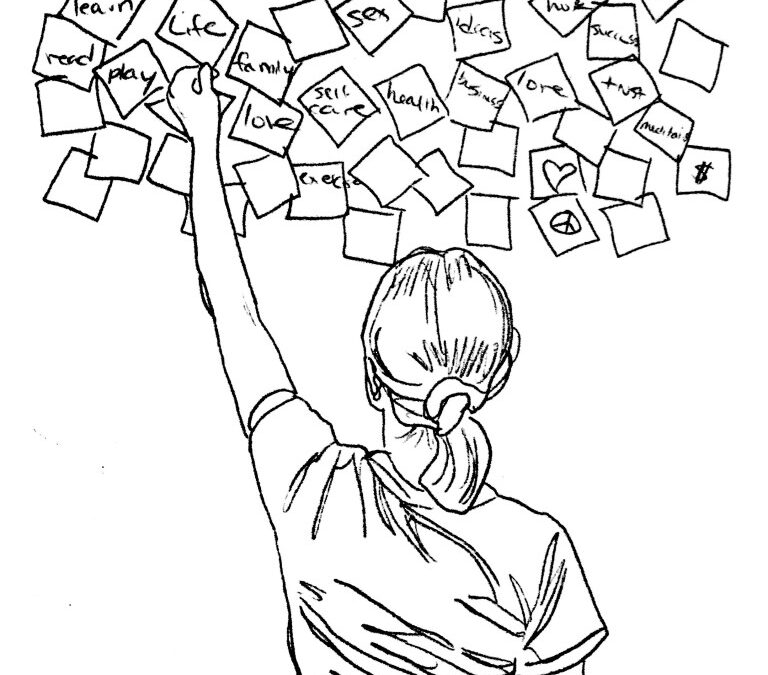
by Dr. Talia Marcheggiani, ND | May 24, 2015 | Art, Balance, Canadian College of Naturopathic Medicine, Creativity, Education, Exercise, Family, Finding yourself, Happiness, Healing Stories, Health, Ideal You, Letting Go, Listening, Medicine, Meditation, Mental Health, Mind Body Medicine, Mindfulness, Motivation, Patience, Personal, Psychology, Relationships, Self-care, Self-reflection, Stress
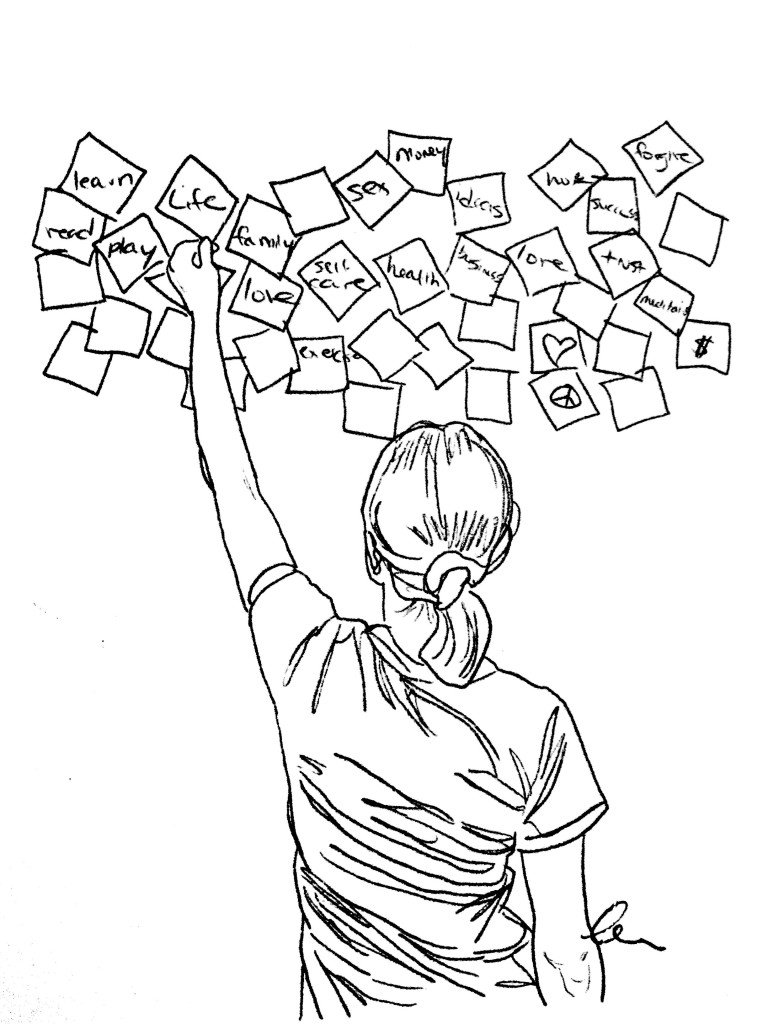 According to James Altucher, author and entrepreneur, it is possible to reinvent yourself in 5 years. In his book, The Power of No, he tells us how to reinvent our lives by first saying a big, fat No to all the things that don’t serve us—toxic friendships and relationships, stagnant 9-5’s, harmful behaviours, negative thought patterns and, well, just things we simply don’t want to do—in order to free up our lives for greater happiness, abundance and creativity.
According to James Altucher, author and entrepreneur, it is possible to reinvent yourself in 5 years. In his book, The Power of No, he tells us how to reinvent our lives by first saying a big, fat No to all the things that don’t serve us—toxic friendships and relationships, stagnant 9-5’s, harmful behaviours, negative thought patterns and, well, just things we simply don’t want to do—in order to free up our lives for greater happiness, abundance and creativity.
It is now the end of May. For me, May has been a month of reinvention. For the past 10 years it has been the month of closing and good-byes, specifically the end of the school year. The Canadian College of Naturopathic Medicine class of 2015 has graduated, as I did last year. Last week my Facebook feed was infiltrated with pictures of flowers, long black gowns and tearfully heartfelt thank-yous to the friends and family that got my colleagues through their gruelling 4 years of naturopathic medical education. Last year that was me—I remember the black gowns, the face-ache from smiling, drinking a little too much at grad formal and winning an award (“Most Likely to Write a Best Seller”—complete with misspelling of “bestseller”) while eating Portuguese chicken at my house afterwards with my friend F and his family. This year, one year later, I watch these events from afar. May 2014 offered new beginnings and chance for reinvention. I was dating, enjoying the sunshine, looking forward to a trip to India, looking forward to beginning a practice as a naturopathic doctor. Mostly, last May was about the death of one life—that of a naturopathic student—and the birth of a new one: a complete reinvention.
This year the rest of my life stretches before me like one long expansive road. My career is underway. My dating life is stagnant. The next steps are more like small evolutions rather than massive, monumental milestones. I most likely will not don a black gown again, but I can reinvent myself by following the 20 steps below. I can always check back into these practices when I’m feeling stuck, alone or afraid. When life is not going my way, there is always a chance to begin a reinvention of some sort. And, I remind myself, my current reinvention is likely well underway. Since I graduated last May, I have been in the process of reinventing: just 4 more years left until I complete my obligatory 5. While 4 years sounds like a long time, I know from experience that 4-year cycles turn over within the blink of an eye.
What stage are you on in your own personal reinvention? Wherever you are, follow these steps to reinvent yourself:
1) Say no. Say no to all the things that you don’t want to do. Say no to things that cause you harm: emotional harm, mental harm, physical harm, loss of time, loss of money, loss of sleep. We need to say no first before we can free up the time and energy to say yes to the things that we actually want. In fact, say “no” to all the things you aren’t saying “F#$% YES!” to. Read this article for more information.
2) Re-examine your relationships. Who doesn’t make you feel good? Who makes you doubt yourself? Who do you feel will reject you if you act like your true self around them? Gracefully begin to distance yourself from these relationships. You might feel lonely for some time, but loneliness is sometimes a good thing.
3) Clear out your junk. Get rid of everything you don’t use, don’t like and don’t need. Marie Kondo, in the Life-changing Magic of Tidying Up, tells us to donate, trade, sell or dispose of everything we own that doesn’t bring us joy. I think that that is a wonderful litmus test to decide what we should be holding on to. Personally, one thing that did not bring me joy was an awful old desk in my room. It was uncomfortable and ugly. I replaced it with a free desk someone I knew was throwing away. I also donated 7 garbage bags of things: books, clothes and keepsakes from when I was a child. Since then, I feel like my room has been infused with a little bit more joy. Remove all your joyless items from your life and observe how your energy changes.
4) Sit in silence. This could be meditation, staring at the wall, chanting or simply breathing. Do it with eyes closed or open. I start at 20 minutes of meditation—a meditation teacher I had told me to always use a timer to increase self-discipline—and work up to 30 some days and an hour on really good days. Start with 5 minutes. Sitting in silence helps to quiet the mind and bring us back to the present. You’ll be amazed at what you discover when you sit in silence. Read some books on meditation or take a meditation course for specific techniques, but simply sitting in silence can offer amazing benefits as well.
5) Explore the topics that interested you as a child. When I got back into painting in 2008, after getting a science degree when I’d always been interested in the art, my life changed a little bit. I started a blog in 2011; it happens to be the one you’re reading now. Get back into whatever you were passionate about as a child, even if it’s just a cartoon you used to watch.
6) Start a gratitude jar. Once a day write down something that you are grateful for—use as much detail as possible—and toss it in a jar or shoebox. When you’re feeling low, open up the jar and read the messages you’ve left yourself. I also tried a similar exercise with things I wanted to manifest or achieve. A few months later I read my entries and realized I’d achieved every single one. It’s amazing what kind of energy glass jars can attract.
7) Read. According to James Altucher, you need to read 500 books on a given topic in order to become an expert on something. You have 5 years to reinvent yourself, so start your reading now. Read one book and then, from that book, read another. It’s interesting where reading trails can lead us. I read one book, which mentions another book, read that book and then end up in a new world I never knew existed. I personally feel a little anxious when I don’t have a book beside my bed, but if you’re new to reading, start small. There are two books that I’ve already mentioned in this blog post; start from either of them and then go from there. The next on my list is The Artist’s Way, by Julia Cameron, which was mentioned in The Power of No. Who knows where that one will lead me.
8) Get 8-9 hours of sleep a night.
9) Eat your vegetables, especially leafy greens. Avoid sugar, moderate alcohol and caffeine. Eat healthy protein and healthy fats (if you don’t know what those are, welcome to my blog! browse more of my articles on healthy eating or book an appointment with a naturopathic doctor like me!—shameless self promo).
10) Exercise. Enjoy some movement every day.
11) Exercise your idea muscle. According to James Altucher, creativity is a muscle that we need to exercise lest it atrophies, like any other muscle. He recommends getting a journal and writing 10-20 ideas in it every day. They don’t have to be good ideas, just any ideas. Removing the filter of self-judgement is important for allowing creativity to flourish. We need to strengthen that muscle.
12) Get some psychotherapy. Start dealing with childhood wounds and meeting your inner critic. Address your erroneous beliefs about yourself, the world and the past. Contact me to learn where to get quality psychotherapy in Toronto at an affordable price.
13) Expand your social circle. If you find that after following step 2 your social circle has gotten smaller, start to find ways to expand it. My favourite way to reinvent my social interactions, and thus begin to reinvent my life, is to look up a meetup.com group and start attending. If you’re not sure about a meet-up group you’ve attended, give it 2 more tries before deciding not to go back. In 3 tries, you’ve either made new friends and connections or decided that the energies of the group aren’t right for you. Online dating is another cool place to start meeting people outside your social sphere and getting over social anxieties.
14) Establish a self-care routine. What would someone who loved themselves do every day? Try to do at least some of those things every day. It could be going for a 15-minute walk before doing the dishes. It could be doing the dishes rather than leaving a messy kitchen for your more tired future self. Think about what things will make you feel good and then do them. Most of the time this involves bubble baths—light some candles while you’re at it. Read this article on self-care to learn more.
15) Write a Have-Done List. Instead of writing a list of things you have to do today—your standard To-Do List—write a list of things you’ve done at the end of every day. This fills people with a sense of accomplishment from looking at everything they’ve done. It definitely beats the stress and anxiety of looking at the list of things that must get done looming before them.
16) Treat other people as if it were their last days on earth. We’ve all been told to “live each day on Earth as if it were your last.” But what if you lived as if each day on Earth were everyone else’s last? You’d probably treat them a little more nicely, be open with them, be honest with them and not gossip or speak badly about them. You might appreciate them more. The idea is James’, not mine, but I like it. I think it’s a good rule for how to treat people.
17) Pay attention to what you’re jealous of and what you despise in others. The things we are jealous of in others are often our disowned selves. If I’m jealous of my friend’s Broadway debut I’m probably disowning a creative, eccentric and artistic side of myself that it’s time I give love and attention to. The things we’re bothered by in others often represent our shadow sides, the negative things we disown in ourselves. I used to tell myself the story that my ex-boyfriend was selfish; he took care of his needs first. However, maybe I just needed to start taking care of my own needs or come to terms with my own tendencies towards selfishness. Our negative emotions in relation to others can provide us with amazing tools of enlightenment and prime us well for our own personal reinventions.
18) Let go of the things that were not meant for you. Past relationships, missed opportunities, potential patients that never call back, “perfect” apartments, etc. Say good-bye to the things you don’t get. They’re for somebody else. These things are on their own journeys, as you are on yours. If you miss one taxi, know that there are other, probably better, ones following it. So, rather than wasting time chasing after the missed taxi, meditate on the street corner until the next one comes along.
19) Listen. Ask questions. Show curiosity. When someone finishes speaking to you, take a breath and count to 2 before responding. It’s amazing how your relationships change when engaging in the simple act of listening. I love the Motivational Interviewing technique of reflective listening. In reflective listening, we repeat back the other’s words while adding something new that we think they might have meant, looking for the meaning between the person’s—your friend’s, patient’s or client’s—words. I find that this has helped the person I’m speaking with feel truly listened to. If I get the meaning wrong, it gives the other person a chance to correct me and thereby ensure that we’re really communicating and understanding each other. This one simple tool—reflective listening—has transformed my naturopathic practice and interviewing skills.
20) Be patient. Personally, I’m terrible at this. But, like you, I’ll try working on the other 19 steps while I wait for the next stage of reinvention to take hold. I’ve ordered my next book from the library. See you all in 4 years.

by Dr. Talia Marcheggiani, ND | Apr 30, 2014 | Art, Art Therapy, Balance, Creativity, Health, Mental Health, Psychology, Stress, Student

I know about the healing power of art. Sitting in front of a painting and quietly filling in a private world of colour helps to open up the right side of the brain, dissolving the hard edges of worn thought patterns and softening us to possibility. I know that wonderful realizations arise from the quiet space that art can provide. Bright colours draw attention to inner darkness. Self-criticism becomes louder and steps out into the light, allowing us to properly examine it.
Therefore, when I decided to attend an art therapy workshop, I figured myself to be already part of the choir who I thought would be preached to. I knew that art held the magical power to do deep psychological work. I was just curious as to how that would look in a therapeutic setting.
(more…)
by Dr. Talia Marcheggiani, ND | Oct 27, 2013 | Art, Art Therapy, Meditation, Philosophy, Poetry, Writing
Medicine is an art form; each chart is a blank canvas on which we document the interconnection between ourselves and our patient. Through medicine we allow patients to publish their own autobiographies, as we ghost-write it, pen to paper, in our medical charts.
(more…)
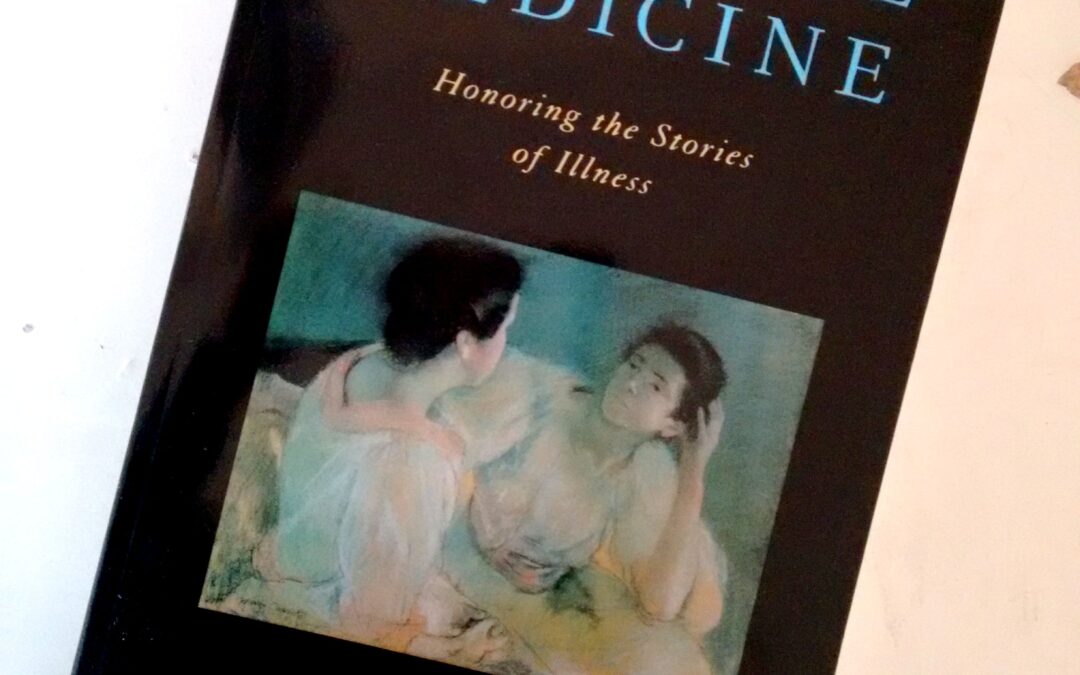
by Dr. Talia Marcheggiani, ND | Apr 8, 2013 | Art, Art Therapy, Book Review, Canadian College of Naturopathic Medicine, Creativity, Empathy, Healing Stories, Listening, Naturopathic Philosophy, Naturopathic Principles, Philosophy, Psychology, Student, Writing
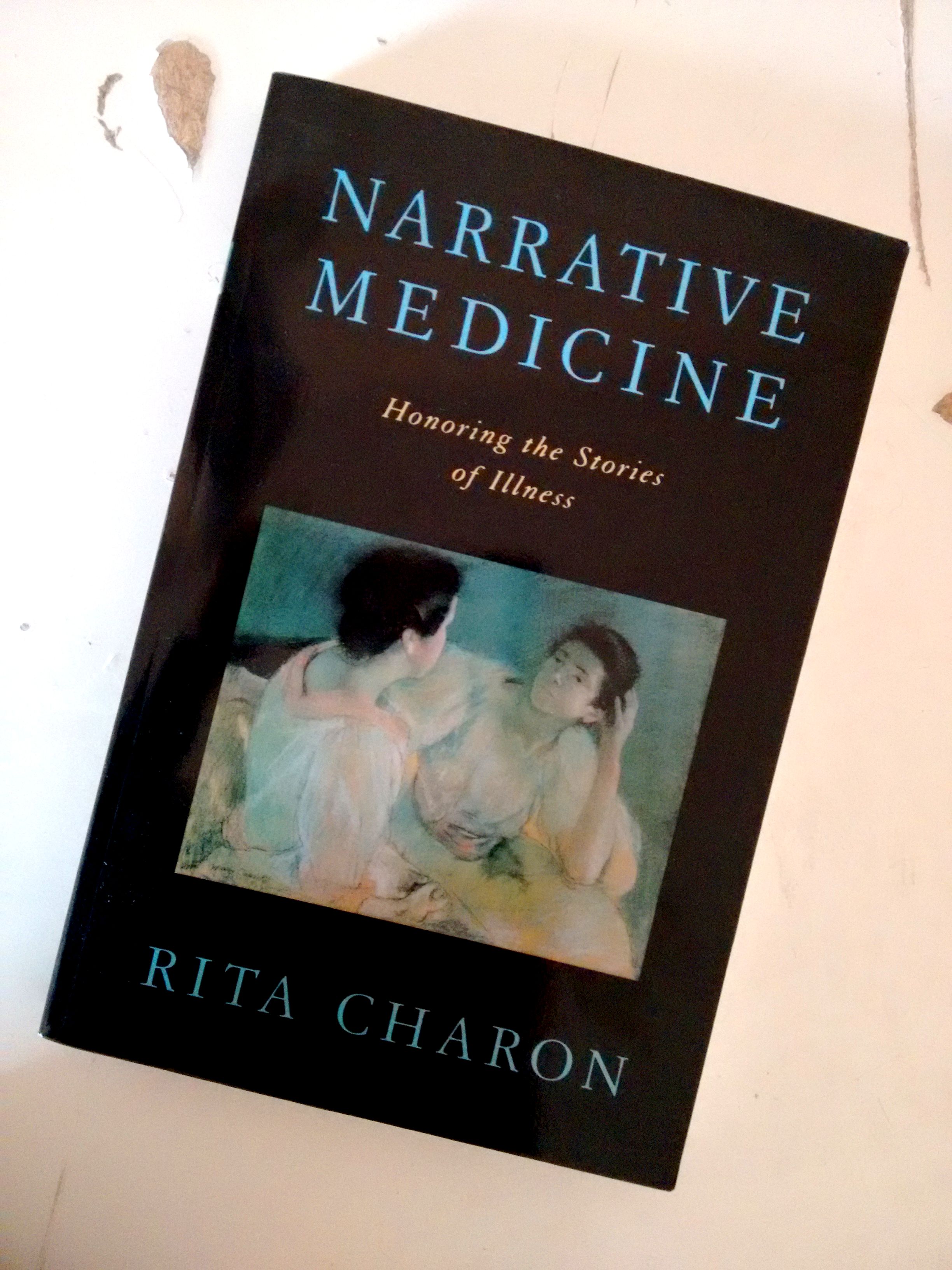 A classmate recently lent me a book that introduced me to the intriguing field of “narrative medicine.” The book is called Narrative Medicine: Honoring the Stories of Illness, written by Rita Charon, MD, an internist practicing in New York City. Narrative medicine combines the practice of medicine with simultaneously learning to recognize, absorb, interpret, and be moved by the stories of illness.
A classmate recently lent me a book that introduced me to the intriguing field of “narrative medicine.” The book is called Narrative Medicine: Honoring the Stories of Illness, written by Rita Charon, MD, an internist practicing in New York City. Narrative medicine combines the practice of medicine with simultaneously learning to recognize, absorb, interpret, and be moved by the stories of illness.
According to the book, the practice of narrative medicine builds empathy and compassion for patients by giving meaning to their experience through stories. It allows doctors to bear witness to the patients and their suffering and to enable those who are suffering to be heard, thus making their care more effective and, by virtue of the doctor’s presence and ability to testify to the patient’s pain, the pain is lessened somewhat.
The Need for Narrative in Modern and Natural Medicine
Rita writes, “the medical impulse toward replicability and universality has muted doctors’ realization of the singularity and creativity of their acts of observation and description.” In medical school we come to learn that, when asked to choose between a) b) c) d) or e), all of the above, there can only be one right answer. Through these educative measures, we are led to believe that there is no room for creativity or individuality in medicine. Narrative medicine, however, begins to challenge that belief. According to Dr. Charon, there is a struggle in medicine to balance the need to properly observe the phenomenon of the individual patient and his or her particular clinical presentation before us, with the need to fit people into diagnostic categories. Oftentimes, the scale tips to the latter, simply by nature of patient volume or ease of the encounter. When we fit people into categories we can ease the anxiety that comes with uncertainty. We are soothed by the security of being right, the same way we are soothed by correctly choosing c) on a multiple choice exam. Patients, however, have come to resent this aspect of modern medicine. Rita writes, “patients complain that doctors or hospitals treat them like numbers or like items on an assembly line. They lament that their singularity is not valued and that they have been reduced to that level at which they repeat other human bodies.” In Rita Charon’s eyes, however, we are beginning to see a new emergence of both doctors and patients taking back the right to patient individuality in medical care. We naturopathic doctors hear this often, when asking why a patient decided to come to see us in lieu of a medical doctor, and hearing that they were driven by the need to be treated “like a person”, not just a disease.
Our bodies and our health are integral parts of the narratives of our lives. And so a personal medical history that, in the case of a medical school exam, takes about 8-10 minutes to complete, actually carries in it the patient’s life story. Everything that the body have been through the self has also been through and whatever has happened to the body remains ingrained in the self and forms a part of the patient’s narrative. Kathryn Montgomery, a colleague of Rita Charon’s once said, “you can accomplish an entire medical interview by simply asking a patient, “tell me about your scars.'”
Dr. Rita Charon writes, “without doubt, the teller and the listener in the clinical setting work together to discover or create the plot of their concerns. The better equipped clinicians are to listen for or read for a plot, the more accurately will they entertain likely diagnoses and be alert for unlikely but possible ones. To have developed methods of searching for plot or even imagining what the plot might be equips clinicians to wait, patiently, for a diagnosis to declare itself, confident that eventually the fog will rise and the contours of meaning will become clear.” Narrative, we learn, is essential for understanding illness.
Receiving a Patient History
Sir Richard Bayliss, another colleague of Charon’s, writes, “not only must the physician hear what is said but with a trained ear he or she must listen to the exact words that the patient uses and the sequence in which they are uttered. Histories must be received, not taken.”
Rita Charon’s current method of “receiving” a patient history is described eloquently in her book. It differs so much from the style we are taught in medical school, that I feel it is worth sharing. She writes that, when she first meets a patient, she begins by saying, “tell me what you think I should know about your situation.” She then makes the commitment to listen, without speaking or writing anything down. In medical school we are taught to organize a chart by history of presenting illness, past medical history, family history, etc. However, Charon realized that, by allowing the patient to direct his or her own clinical interview, the information all comes out eventually. She believes it is crucial to allow the patients to narrate their own history, allowing the information to take its own order, to formulate itself into not just a coherent plot but also a literary form, so that the entire story becomes apparent, and free from her own bias and internal or external editing. While the patient tells his or her story, Dr. Charon listens as intently as she can, registering diction, form, images and the pace of speech emitted from the patient’s mouth. She tries not to interrupt or confer signs of encouragement, pleasure or disapproval. She refrains from asking questions. And, she takes the time to absorb the metaphors, idioms, accompanying gestures, plot and characters involved in the patient’s narrative.
Once her patient has finished with his or her telling, Dr. Charon proceeds to the physical exam portion of the clinical visit. She tries to capture what has been said by writing the story down in her chart while the patient changes into his or her gown and readies for the physical examination.
Dr. Charon writes that it has taken her a while to perfect this form of receiving a patient history. As unorthodox as it may seem, she writes that she has come to thoroughly enjoy the individuality and humanity of the stories that come from each person, each one so different from any other and each belonging to a singular person and body. It has helped her understand her patients, maintain empathy for them and provide them with what she believes is more effective care.
The Parallel Chart
Rita Charon believes that, not only is the use of narrative helpful for the doctor-patient relationship, it can be used to help physicians and other healthcare practitioners digest their experience as well. In one of her years as a clinical supervisor, she developed a practice called the Parallel Chart. As medical students and doctors, we are required to write our patient’s stories in the form of medical charts, following a specific format, creating what can be viewed as an entire literary genre used solely among medical professionals. Medical students and doctors alike are expected to learn to write and maintain a coherent medical chart, according to the standards of this genre.
However, as a clinical supervisor, Rita Charon also has her young precepts write a Parallel Chart, one that will not be filed for reference but that is just for the benefit of the practitioner, written in plain language, about one of his or her patients. She tells her students, “every day you write in the hospital chart about each of your patients. You know exactly what to write there and the form in which to write it. You write about your patient’s current complaints, the results of the physical exam, laboratory findings, opinions of consultants, and the plan. If your patient dying of prostate cancer reminds you of your grandfather, who died of that disease last summer, and each time you go into the patient’s room, you weep for your grandfather, you cannot write that in the hospital chart. We will not let you. And yet it has to be written somewhere. You write it in the Parallel Chart.”
After giving her students these instructions, Rita Charon meets with them in a group once a month and gives everyone the chance to read a Parallel Chart entry of their choice out loud. After the reading, she proceeds to comment on the genre, temporality, metaphors, structure and style of the text that has been written, using her literary background as a guide. The other students then have a chance to respond to the text, creating a dialogue surrounding their clinical experiences.
She reflects that her students in the past have written about their deep attachment to patients, their feelings of helplessness in the clinical encounter in their role as mere medical students, the rage, shame and humiliation they experience in the face of disease as well as their awe at patients’ courage. Dr. Rita Charon claims that the students who undertake the task of keeping a Parallel Chart have found that they are more in touch with their own emotions during the clinical encounter, feel deeper empathy for their patients and fellow colleagues and are able to understand their patients more fully. Research is even being conducted at Columbia University to evaluate the effectiveness of Parallel Charting, finding that physicians who engage in this practice are more proficient and effective at conducting medical interviews, performing medical procedures and developing doctor-patient relationships with patients.
In many ways, naturopathic medicine already acknowledges the importance of patient story-telling when it comes to healing from disease. We treat people as individuals and look for the root cause of illness, taking into account the story behind each of our patient’s “scars”. However, as our school curriculum becomes more medicalized and primary care-focused, I believe that our need to conduct efficient medical interviews and develop effective treatment plans is in danger of displacing our inherent philosophies. Taking the time to read Rita Charon’s book opened my eyes to the importance of patient individuality and respect for patient narrative. To understand illness, it is essential to integrate narrative into the framework of the clinical encounter by giving patients the space to tell, while also giving ourselves, the practitioners, the space for our own telling with the intention of becoming better, more empathetic doctors.

by Dr. Talia Marcheggiani, ND | Sep 10, 2012 | Art, Colombia, Nature, Nature Cure, Photography, South America, Travel
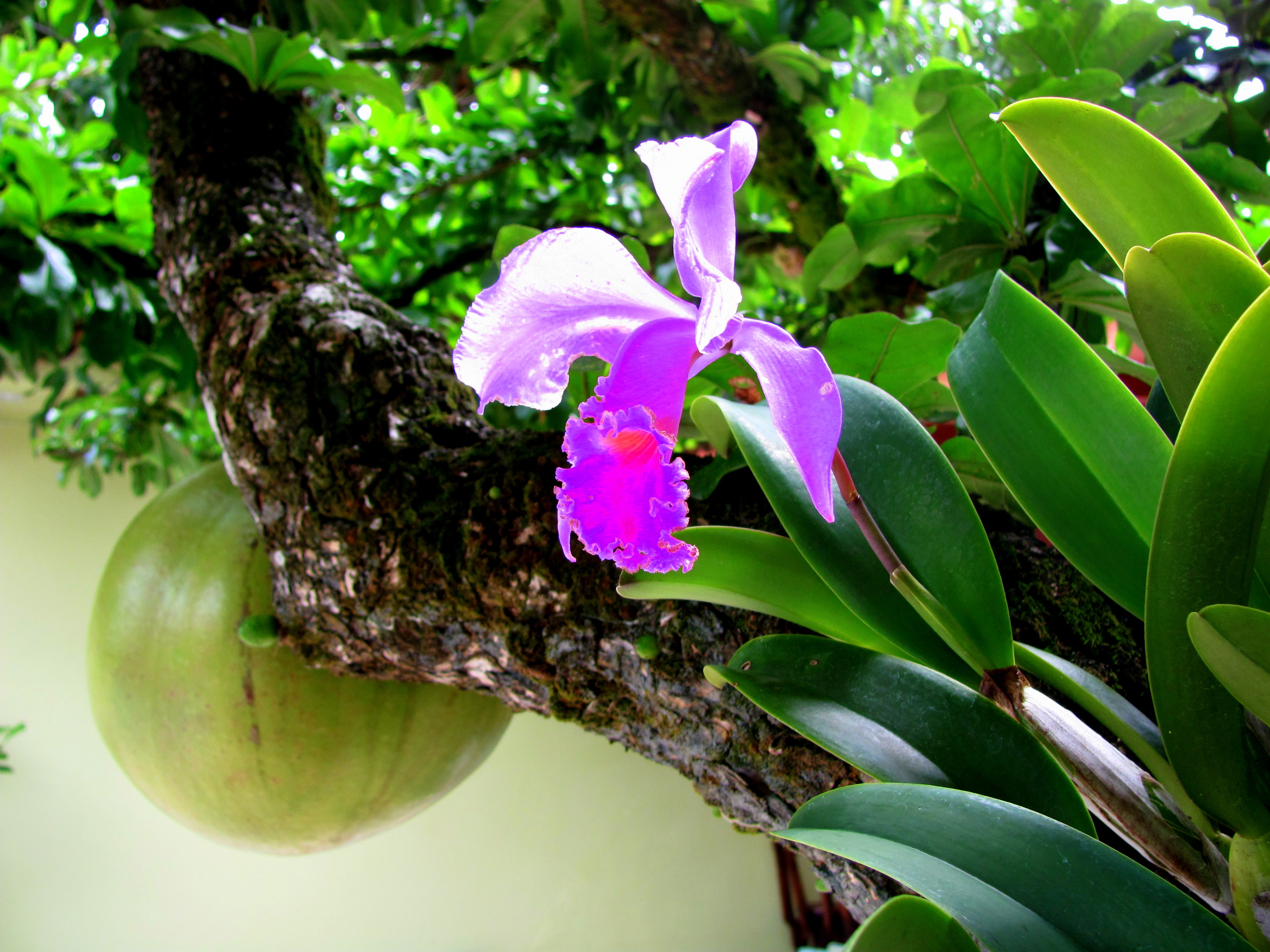
Treat yourself to some visual nature cure with green scenes from Colombian towns around Bogotá and Medellín. 2012.
(more…)
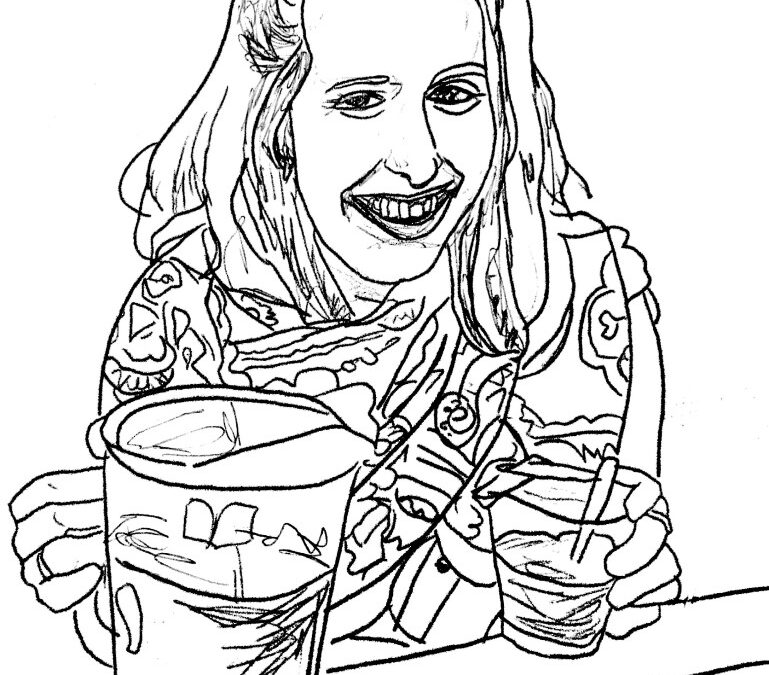
by Dr. Talia Marcheggiani, ND | Aug 13, 2012 | Art, Art Therapy, Beauty, Body Image, Colour, Creativity, Culture, Finding yourself, Mental Health, Mindfulness, NPLEX, Self-esteem, Self-reflection, Toronto, Writing
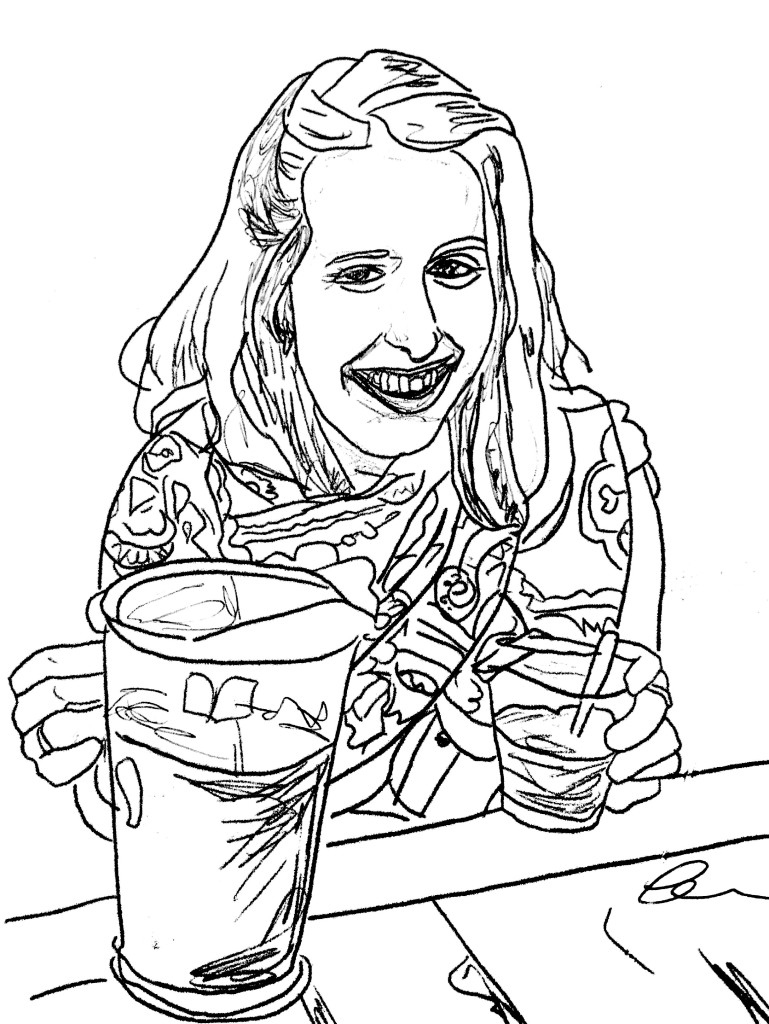 My art is mainly inspired by nature or by places I’ve traveled to or read about. It doesn’t tend to emphasize detail and, when humans are included in the composition, they are usually faceless, depicted as chunky, cubist blocks of colour. People are rarely the main subject of my paintings. And, unlike Frida Kahlo, one of my painting idols, I have never entered the world of portrait painting, much less self-portrait painting.
My art is mainly inspired by nature or by places I’ve traveled to or read about. It doesn’t tend to emphasize detail and, when humans are included in the composition, they are usually faceless, depicted as chunky, cubist blocks of colour. People are rarely the main subject of my paintings. And, unlike Frida Kahlo, one of my painting idols, I have never entered the world of portrait painting, much less self-portrait painting.
When painting the facial features of other people, one must pay obsessive attention to detail. This is a skill I don’t have when it comes to painting. It’s almost as if, through painting, I can leave the burden of fussing over details behind to pursue a sense of therapeutic self-pleasing aesthetic that focuses on colour and shape, rather than the fine lines and subtleties. I tend to spend far too much time obsessing over details in real life and so I view painting as an escape from that. When painting life-like portraits, however, such an escape is impossible.
But, like Picasso, I want to become an artist-of-all-trades or, at the very least, claim experience with different subject matter. So, besides feeling that the experience would be tedious and slightly narcissistic, I decided to attempt a self-portrait.
The thing about self-portraits is that we know our own faces very well. From my teenage years through young adulthood I remember countless hours spent obsessing over my reflection: squeezing zits, plucking eyebrows, willing my nose to shrink and wondering what made my face less poetic than that of a famous actress or singer, almost like there was a secret beauty ingredient I might have been born lacking. Painting a self-portrait demands an attention to detail unlike any other mirror flirtation ever performed. From the exact shape of the mouth, to the way the cheeks are outlined, I found myself staring at parts of my reflection that I had never experienced before.
Because I’m not experienced in portrait-painting, the painting started out rough. My oil-painted face was taking on a deformed, misshapen quality, it didn’t look like me, and I found myself criticizing the painting, judging it, and then my own abilities. I then realized, painfully, that this was akin to the way I would criticize my real-life reflection. After a while, though, I found myself comforted by my outline’s familiarity and that comfort turned into a sort of visual satisfaction. This was my face: the window to the person I am who lies beneath and the signature that accompanies everything I say or do in this life. I began to make peace.
Creating art allows us lots of space for reflection. Perhaps that’s why it’s so therapeutic. As I mix colours and apply paint to canvas my mind relaxes and wanders, uninhibited, into new terrain. I find that while painting it helps to have a notebook handy because one artistic pursuit nurtures another and I find myself inspired to not only paint, but write as well. On this portrait-painting day in particular, I felt a relaxing space open up for reflection on who I am now, at 26 years of age. My reflection may have changed some, but behind the wide gaze, I could still see the smirk of that 9-year old, in the Universal Studios sweatshirt, who was imaginative, idealistic and shit-disturbing, all at once. I wonder if this 9-year-old knew that in a few years’ time she would be studying something called naturopathic medicine.
This summer has been dedicated to reviewing basic medical sciences for NPLEX and working as an English as a Second Language (ESL) teacher in Toronto. I haven’t made much time for long contemplative walks, reading literature, laying on the grass, socializing or, most of all, painting or drawing. The way I structure my day is a reflection of my disbalance, not my actual interests and priorities and, as I paint, my evolving painted self stares back at me from it’s canvas home and asks me, “is this what you wanted?”
I’m not sure. But portrait painting shows me that there is a link between borderline narcissism and self-contemplation. Maybe that’s why it’s called self-reflection.















